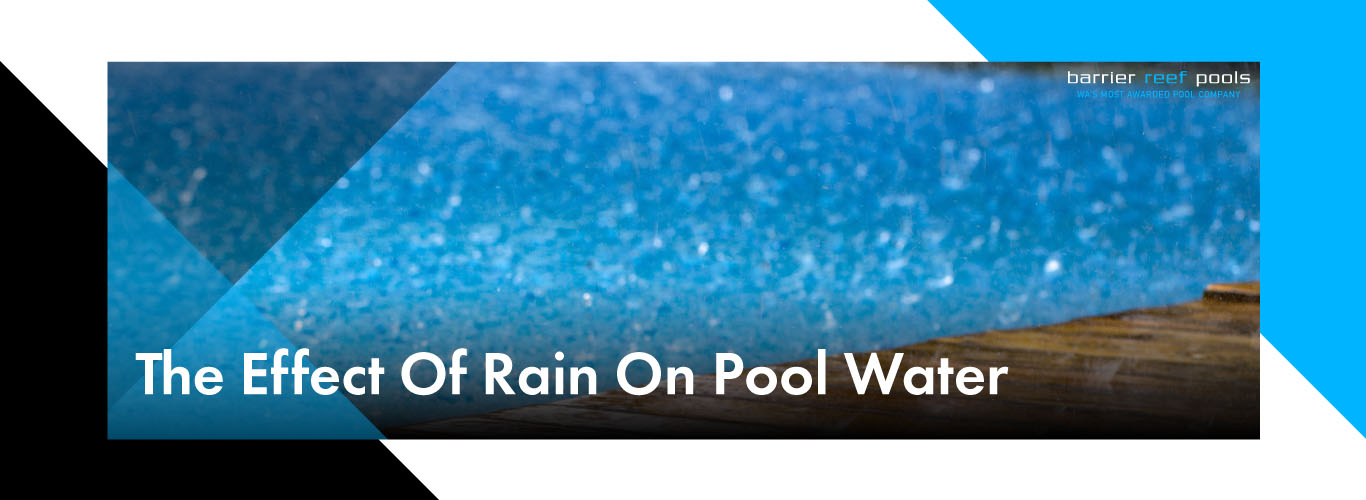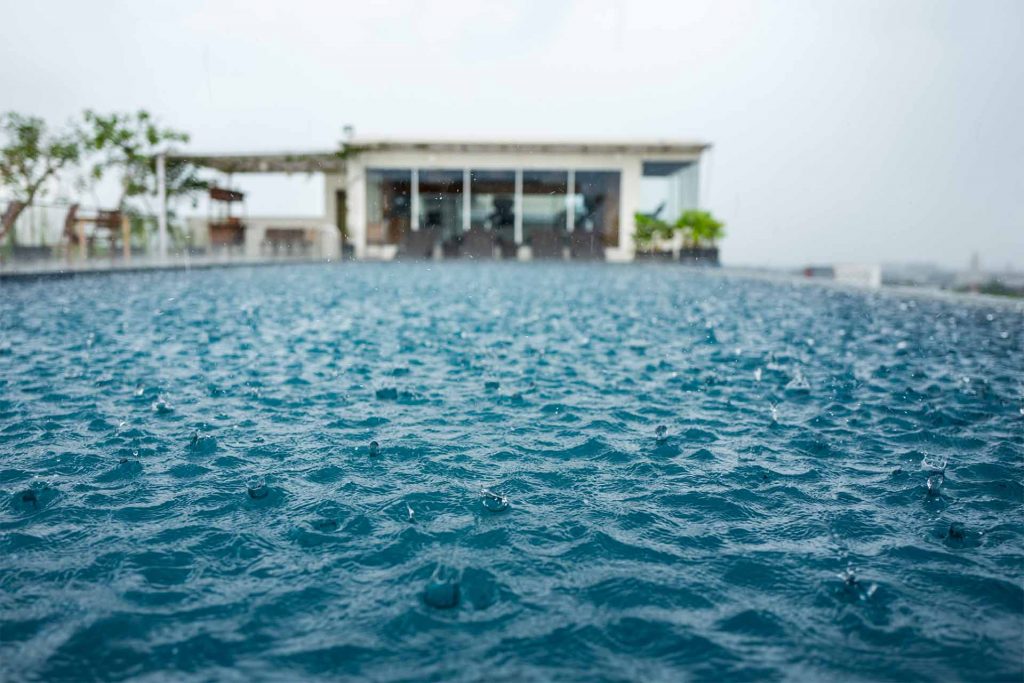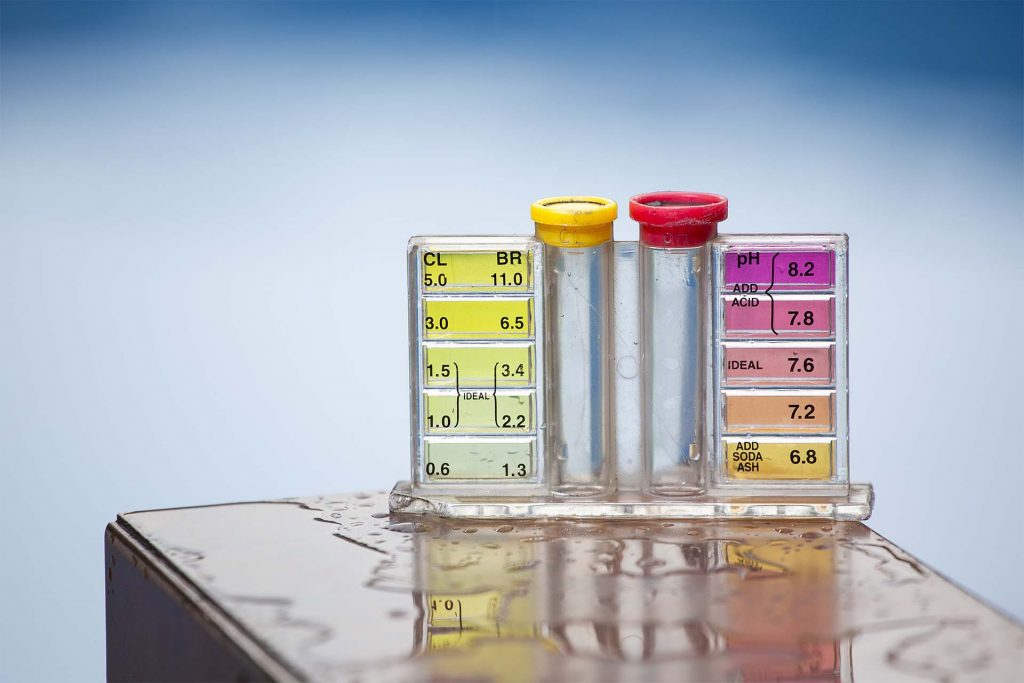With the perks of owning a pool in your backyard comes the responsibility of maintaining it well so it is healthy for a swim all year-round. Have you ever wondered what happens to your pool water when there is a heavy downpour? And what should you do after the heavy rain to make your pool suitable for a swim again?
The truth is, if your area has experienced light rain then you needn’t lose your sleep over it. Light rainfall does not impact your pool water as much as a rainstorm accompanied by heavy wind. Rainwater is acidic. The more amount your pool gets, the worse it is.
In this blog, we look at how the rain can affect your pool water and the steps you can take to bring your pool to its normal state.

How Does The Rain Affect My Pool Water
Here is what rainwater can do to your pool water:
Affects Chemical Balance
Rain dilutes your pool water which can mess up its chemistry. When the water is diluted, and the chlorine is no longer actively killing the contaminants, algae and bacteria can grow quickly. The rainwater also collects pollutants, dust and dirt as it falls on the ground which can change the chemical balance in your pool.
Disturbs Your Pool's pH Levels
The ideal range of pH level of your pool water should be between 7.2 and 7.6. Since the rainwater is acidic, it makes the pH levels drop. Unbalanced pH levels can cause cloudy or murky water and even stain the pool sides. If you swim in water with low pH, your eyes and skin can experience severe irritation. You could be left feeling itchy for a long time.
Affects The Total Alkalinity
Rainwater lowers the total alkalinity levels in your pool. This can cause the water to turn green, erosion of your pool surfaces, corrosion of pool equipment and more. A balanced total alkalinity level ensures that your pool’s pH level remains stable.
Increases The Calcium Hardness
The rainwater will not directly increase the calcium hardiness or the dissolved solids in your pool. However, it will wash any dirt or minerals off your pool deck into the pool water. This may increase the calcium hardiness and affect your pool’s total alkalinity levels.
Pollutes Your Pool
Heavy rain and strong winds can cause run-off from the surrounding grass and plants to pollute your pool. Your grass and plant beds are full of fertilizers that contain nitrates and phosphates. These fertilizers can boost plant growth but are not good for your pool. When mixed in the pool, they can promote algae growth.
Floods Your Pool
This may be obvious but still deserves a mention. Your pool may have drains in place to get rid of excess water that floods it. However, the drains may not work optimally during incessant rains. To prevent your pool from flooding, if you have a cartridge filter, flow the water back through the system using the drain port. Additionally, in the event of a heavy storm, you can set the sand filter to backwash.

What Can I Do After Heavy Rain?
Here are some steps that you can follow after a prolonged heavy rain session to get your pool back in shape:
Check Your Water Level
The first thing to do once the rain stops is to check the water level of your pool. The ideal water level is – center of your skimmer opening. If the water level is above it, you should drain the pool to bring it down to the correct level. Once the water level reaches a mid-skimmer level, you can stop the pump and proceed to the next steps.
Consider Shocking Your Pool
Many pool owners shock their pool after heavy rains to kill all the bacteria and contaminants. Just before you turn the pump on, you can shock the pool. This ensures that your pool gets time for water circulation after the shock. The pump should run for at least 4 hours to completely mix the shock chemical. Lastly, remember to add the shock to the water and not the other way round.
Check Your Water Circulation
Rainwater can bring a lot of debris with it. Before your turn on the pool pump, empty your pool skimmer baskets. You can even use an automatic vacuum to clean the sides of the pool and bottom later. Set your pump to ‘Filter’ and leave it running as you follow the steps below.
Skim, Brush And Vacuum
If you spot any debris on the surface of your pool water, it is best to clean it up now. Don’t wait for the debris to settle at the bottom of your pool as that would require more efforts to clean. Next, scrub the walls, stairs, and tight spots of your pool to make them contaminant-free. Lastly, don’t forget to use an automatic vacuum to clean the pool floor and get rid of any contaminants that got left behind.
Test Your Water And Adust Chemicals
Once you have followed all the steps mentioned above, it is time to test your pool water.
- Your pH level must be in the range of 7.2 and 7.6.
- The recommended range for total alkalinity levels in your pool is from 80 to 120 parts per million (ppm).
- The recommended range for calcium hardness is from 100 to 300 ppm.
- Your pool’s chlorine or sanitizer levels must be between 1.0 and 3.0 ppm.
Once you know the existing levels, it is time to adjust. Start by adjusting the total alkalinity levels first as it has a direct impact on your pH levels. When the alkalinity levels increase, it increases the pH level of your pool too and vice-versa. Once the total alkalinity and pH levels are stabilized you can move on to calcium hardness and lastly chlorine levels.
Note: Sodium Carbonate, popularly known as soda ash, can raise pH levels effectively. Depending on your pool size, you can take the help of a pool expert to buy the right-sized container to treat your pool. Make sure you follow the instructions on the package and do not add too much product in one go. Leave the pump running for at least an hour to ensure the product gets mixed well.

Wrapping Up
If you are located in an area that receives heavy rainfall frequently, it is recommended to keep ahead of the changes to your pool water by testing it regularly. It is a wise idea to drain the excess water from the pool and bringing it to an appropriate level for proper skimming. If you are expecting a heavy downpour, you can prepare your pool ahead of time by setting up a pool cover. This can help keep most of the debris such as leaf litter and twigs from falling into your pool.
In case you have any other pool-related queries or are looking to get a pool installed in your backyard, you may get in touch with us. We would be happy to give your backyard a visit and help you pick the best pool model for your home.
Contact us TODAY!


